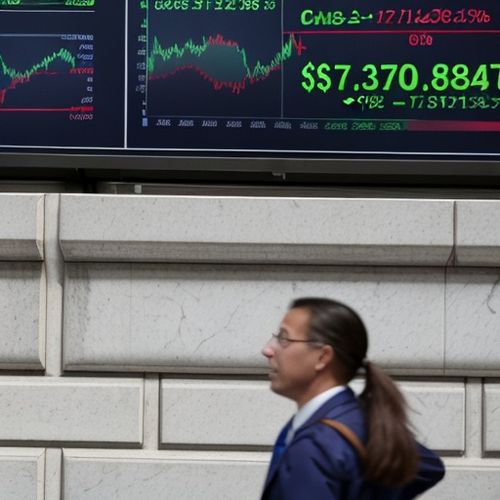Mortgage rates in the US have experienced significant volatility recently, driven by a combination of economic factors and policy changes. On Friday, the average rate for the popular 30-year fixed mortgage surged by 13 basis points to 7.1%, the highest rate since mid-February. This surge is part of a broader trend influenced by fluctuations in bond yields, which are closely tied to mortgage rates.
The Role of Bond Yields
Mortgage rates and bond yields are closely linked because both are influenced by investor expectations regarding inflation, risk, and economic growth. The 10-year Treasury yield, in particular, serves as a benchmark for mortgage rates. When bond yields rise, mortgage rates typically follow suit because lenders need to offer higher interest rates to attract investors.
Tariffs and Market Uncertainty
The recent imposition of tariffs by President Donald Trump has added a layer of uncertainty to the market. While Trump’s tariffs on imported vehicles and other goods were partially rolled back, the tariffs on Chinese imports remain at 145%. This uncertainty has led investors to sell off bonds, driving yields higher and, consequently, pushing mortgage rates up.
Impact on the Housing Market
The increase in mortgage rates comes at a critical time for the housing market, which is traditionally busiest in the spring. Higher mortgage rates can make homebuying more expensive, potentially reducing demand and slowing down the market. Nancy Lazar, chief global economist at Piper Sandler, noted that with mortgage rates rising and consumers already concerned about the job market, the housing sector is likely to remain weak.
Consumer Sentiment and Inflation Expectations
Consumer sentiment has also been affected by these changes. A recent report showed that consumer expectations for inflation jumped from 5% in March to 6.7% in April, the highest level since 1981. Higher inflation expectations can lead to higher bond yields as investors demand more compensation for the declining purchasing power of future interest payments.
Future Outlook
Despite some relief in mortgage rates earlier in the year, the recent surge suggests that rates may remain elevated or continue to fluctuate. Experts predict that mortgage rates could fluctuate between 6.5% and 7% in the coming months, reflecting ongoing volatility in financial markets due to tariffs and fears of a recession. This volatility makes it challenging for potential homebuyers and investors to make long-term financial decisions.
In conclusion, the recent surge in mortgage rates is a result of multiple factors, including rising bond yields driven by inflation expectations and market uncertainty due to tariffs. These changes have significant implications for the housing market and consumer spending power. As the economic landscape continues to evolve, keeping an eye on bond yields and policy changes will be crucial for understanding future trends in mortgage rates.

By Samuel Cooper/Apr 14, 2025

By Michael Brown/Apr 14, 2025

By Emma Thompson/Apr 14, 2025

By David Anderson/Apr 14, 2025

By Megan Clark/Apr 14, 2025

By Emma Thompson/Apr 14, 2025

By Thomas Roberts/Apr 14, 2025

By Rebecca Stewart/Apr 14, 2025

By Natalie Campbell/Apr 14, 2025

By Laura Wilson/Apr 14, 2025

By Ryan Martin/Apr 14, 2025

By Elizabeth Taylor/Apr 14, 2025

By Laura Wilson/Apr 14, 2025

By Sophia Lewis/Apr 14, 2025

By Laura Wilson/Apr 14, 2025

By Elizabeth Taylor/Apr 14, 2025

By Amanda Phillips/Apr 14, 2025

By Sarah Davis/Apr 14, 2025

By Samuel Cooper/Apr 14, 2025